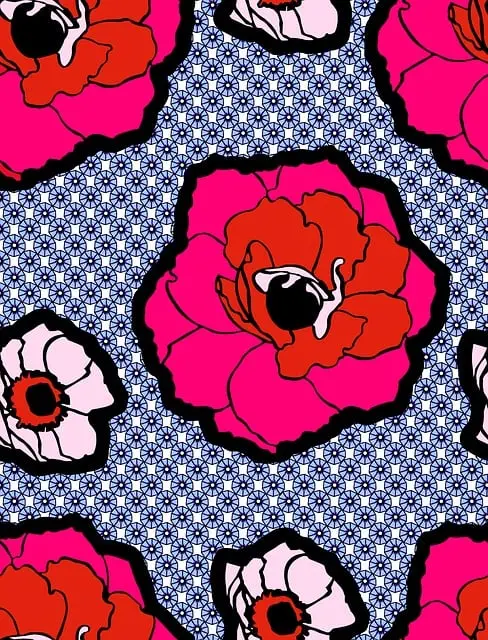Chronic pain significantly impacts quality of life, often persisting beyond acute pain. Various chronic pain types, including neuropathic and nociceptive, pose challenges for treatment. Kratom, derived from the Mitragyna speciosa tree, is an alternative therapy that may alleviate chronic pain through its alkaloids' interaction with opioid receptors. The 'toss and wash crushed leaf kratom' method involves ingesting a precise dose of finely crushed kratom leaves with liquid, which users report can provide pain relief, improve mood, and increase energy. However, it's crucial to approach this method cautiously due to individual dosage variability and the need for more research on long-term use. The legal status of kratom varies by jurisdiction, so users must adhere to local laws. For safe and effective use in pain management, individuals should consult healthcare professionals and follow guidelines from organizations like the American Kratom Association. It's important to source high-quality, lab-tested kratom from reputable vendors and to monitor and adjust doses as needed for optimal outcomes. Regular consultation with healthcare providers is essential for managing risks associated with using 'toss and wash crushed leaf kratom' for chronic pain management.
Chronic pain is a pervasive challenge affecting millions worldwide, often leading to a diminished quality of life. Among the various strategies for management, kratom has emerged as a topic of interest due to its potential analgesic properties. This article delves into the role of toss and wash crushed leaf kratom as a viable option for pain relief, offering a comprehensive guide. We will explore the scientific rationale behind its use, the safest practices for incorporating it into your regimen, and provide an overview of how this method can be effectively integrated into chronic pain management. Join us to navigate the nuances of kratom’s place in alleviating persistent pain.
- Understanding Chronic Pain and Kratom's Role: An Overview of Toss and Wash Crushed Leaf Kratom as a Management Strategy
- The Science Behind Kratom: How Crushed Leaf Can Alleviate Chronic Pain Symptoms
- Navigating Safety and Effectiveness: Best Practices for Using Toss and Wash Crushed Leaf Kratom for Pain Management
Understanding Chronic Pain and Kratom's Role: An Overview of Toss and Wash Crushed Leaf Kratom as a Management Strategy

Chronic pain is a persistent condition that can significantly impact an individual’s quality of life, often lasting longer than acute pain following an injury or surgery. It encompasses various forms, including neuropathic and nociceptive pain, and can be resistant to conventional treatments, leading to ongoing discomfort and disability. In this context, many individuals explore alternative therapies, among which kratom has gained attention as a potential management strategy. Kratom, derived from the leaves of Mitragyna speciosa, is a tropical evergreen tree native to Southeast Asia. Its leaves contain alkaloids that can interact with the body’s opioid receptors and provide pain-relieving effects. The ‘toss and wash crushed leaf kratom’ method involves precisely what the name suggests: taking a measured dose of crushed kratom leaves, tossing it into the mouth, and washing it down with a beverage, typically water. This method allows for precise dosage control, which is crucial for managing chronic pain effectively. Users often report relief from chronic pain, improved mood, and increased energy levels after ingesting kratom. However, it’s important to approach its use with caution, as the appropriate dosage can vary significantly among individuals, and long-term effects are still under research. Additionally, the legality of kratom varies by region, and it should be used in compliance with local laws and regulations. Individuals considering kratom for pain management should consult healthcare professionals to ensure safe and effective use.
The Science Behind Kratom: How Crushed Leaf Can Alleviate Chronic Pain Symptoms

Kratom, a tropical evergreen tree native to Southeast Asia, has garnered attention in the realm of chronic pain management due to its potential therapeutic properties. The leaves of kratom contain alkaloids, primarily mitragynine and 7-hydroxymitragynine, which are thought to interact with the opioid receptors in the brain, thereby modulating pain perception. When consumed, the crushed leaf of kratom can be administered through various methods, one of which is the “toss and wash” technique. In this method, individuals take a predetermined dose of the crushed kratom leaf and quickly consume it with a liquid, often water, to mitigate the bitterness. This approach allows for precise dosing, which is crucial for managing chronic pain symptoms effectively.
The scientific community has been investigating the mechanisms by which kratom alleviates chronic pain. Research suggests that the alkaloids in kratom bind to mu-opioid receptors, similar to opioid pain medications, but without the same level of risk for addiction or dependency. This binding action can lead to pain relief and also stimulate the release of dopamine and serotonin, which may contribute to improved mood and well-being. Additionally, kratom’s interaction with other neurotransmitter systems could explain its broader therapeutic potential, including the management of chronic pain. Users report that the “toss and wash crushed leaf kratom” method provides relief from various types of pain, ranging from mild discomfort to the more severe, persistent pain associated with chronic conditions. However, it is important for individuals considering this approach to consult healthcare professionals and consider the potential benefits and risks, including regulatory status, as kratom remains a subject of ongoing research and debate in the medical community.
Navigating Safety and Effectiveness: Best Practices for Using Toss and Wash Crushed Leaf Kratom for Pain Management

When integrating tossed and washed crushed leaf kratom into your chronic pain management regimen, it’s crucial to prioritize safety and effectiveness. This method, known as ‘toss and wash,’ involves quickly ingesting a measured dose of crushed kratom leaves with a liquid, typically water. To ensure safe use, begin with a low dosage and carefully monitor how your body responds. It’s advisable to consult with a healthcare provider beforehand, as individual sensitivities to kratom can vary significantly. The American Kratom Association provides guidelines on dosing, which should be followed to minimize potential risks. Additionally, sourcing high-quality, lab-tested kratom from reputable vendors is essential for both safety and efficacy. These steps help mitigate adverse effects and increase the likelihood of a positive outcome in managing pain. Regularly assess the effects of kratom on your condition, and adjust your intake as necessary, in collaboration with your healthcare team. This vigilant approach to dosing and sourcing can contribute to a safer and more effective experience with toss and wash crushed leaf kratom for chronic pain management.
In conclusion, chronic pain management presents unique challenges that may be mitigated through alternative therapies such as toss and wash crushed leaf kratom. The article has delved into the multifaceted nature of chronic pain and the potential role of kratom in its alleviation, grounded in scientific understanding of its effects. It is crucial for individuals considering this approach to navigate safety and effectiveness with careful deliberation, adhering to best practices outlined herein. As such, those affected by chronic pain may find toss and wash crushed leaf kratom as a strategy worth exploring under the guidance of a healthcare provider, given its complex interaction with the body’s pain response. It is imperative to approach this method with caution, considering the individual’s health status and the legalities surrounding kratom use in their jurisdiction. With an informed perspective on the potential benefits and risks associated with kratom, individuals can make a more educated decision regarding its inclusion in a comprehensive pain management plan.






